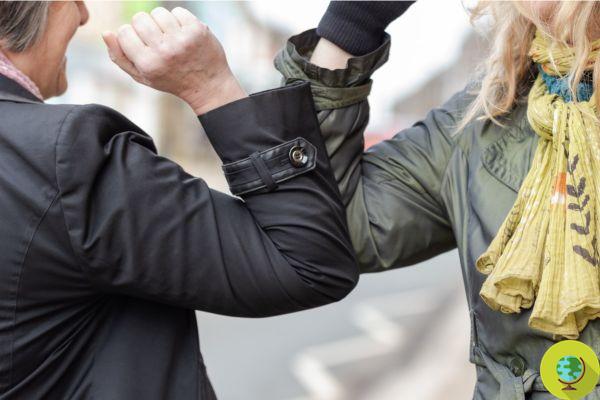
New Harvard Study Says Intermittent Social Distancing May Be Needed to Stop Coronavirus Through 2022
Don't store avocado like this: it's dangerousA single period of confinement will not be enough to stop COVID-19. Several stages of social distancing will need to be implemented until 2022 if the collapse of hospitals is to be avoided. This is one of the conclusions of a study that was published in the journal Science by scientists from the prestigious Harvard University (USA).
We are all asking ourselves these days: once the real emergency phase is over, will social distancing still be necessary and how long will it last? A new Harvard study has tried to answer these questions which, based on the data currently available, presents different scenarios.
Let's start immediately with the main data that emerges from the new study conducted by a team of epidemiologists from the prestigious Harvard University: a single period of confinement seems to be not enough to stop the coronavirus. Sara It is necessary to implement several stages of social distancing until 2022, if we want to avoid the collapse of hospitals while immunity (still in reality only presumed) is extended to the population.
As Stephen Kissler, director of research published in Science, told AFP:
“We found that a single period of social distancing is probably insufficient to keep the incidence of SARS-CoV2 within the boundaries of the health care system in the United States. What appears to be necessary, in the absence of treatment, is to apply intermittent periods of social distancing ”.
This is certainly one of the most challenging and difficult to digest conclusions of the new study which was based on computer simulations obtained by observing the data relating to the health emergency in the United States and to what is known today about the new coronavirus and 2 other viruses of the his "family": HCoV-OC43 and HCoV-HKU1.
Possible scenarios
Another interesting thing that emerged from the research is the hypothesis that COVID-19 will become, with a certain probability, a seasonal disease that will worsen in the cold months. In practice, a bit like the other coronaviruses that cause the common cold, even SARS-CoV2, it should continue to spread with higher transmission rates in the cold months of the year and then cyclically reappear with more force (although it would be however present in every season).
However, other scenarios were also evaluated: the one in which the new coronavirus determines permanent immunity, in this case it could disappear for a few years after causing a peak of infections; and the one in which immunity is stable for about 2 years, in this case the protection from the other coronaviruses in circulation could help more to reduce the spread of the disease, making it disappear for a few years but with the probability that it will recur later .
The authors also stated that it will be necessary to carry out thorough population tests to know when it is convenient to reactivate social distancing measures by limiting infections and thus keeping the pressure on hospitals at adequate levels.
In the opinion of Marc Lipsitch, co-author of the study, ongoing social distancing can turn out to be negative. Hence the importance of an intermittent type of spacing, so that transmission periods can "accelerate the acquisition of herd immunity".
In any case, these conclusions must be interpreted with caution, given the uncertainty that still exists regarding this new virus, which appeared too recently to be able to fully understand it in all its details and dynamics. Basically, the level of immunity conferred by the coronavirus and its duration is still unknown and this is not a minor factor, indeed it is the biggest problem and the real limitation of the conclusions obtained by this study.
At this time, and taking into account the behavior of the other better known coronaviruses, A SARS-Cov2 infection is believed to confer some immunity for about a year. It is also speculated that the other coronaviruses that cause colds may confer some degree of protection.
Given the current uncertainty, the authors recommended serological (i.e. antibody) studies to determine the extent and duration of immunity. However, the team said that immunity is highly unlikely to be strong enough and last long enough for the new virus to go extinct after this initial first wave, as was the case with the 2002 SARS outbreak. 2003.
Harvard experts therefore believe quite certain that the virus is here to stay for a while, so we must find ways to deal with it, one way or another, and have as little damage as possible.
The normality"According to this study, it won't come until, in about a year and a half, targeted treatments and vaccines are ready and available.
Reference source: Science / AFP
Read also:
- Coronavirus: no, it will never go back to "normal", but this is not necessarily bad news
- When will # all be well? Not so soon. The story from Hong Kong that shows us what life will be like after the quarantine
- Coronavirus: the "pyramid of infections" and mortality based on age groups in the Lancet study


























